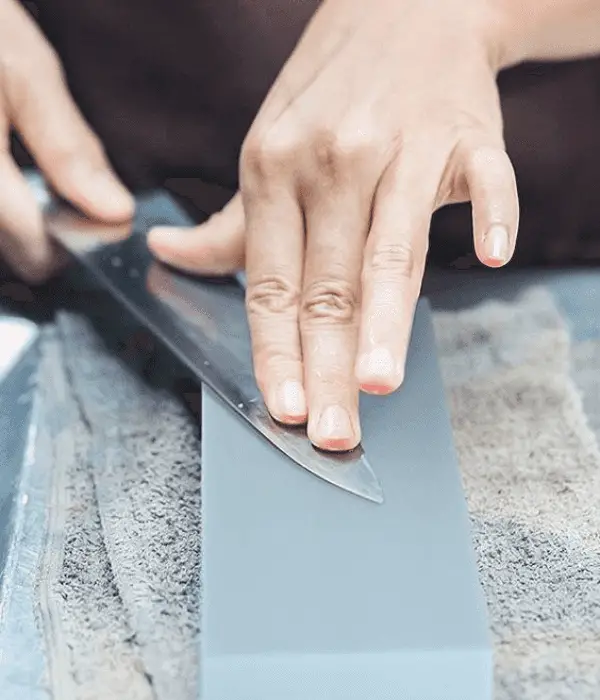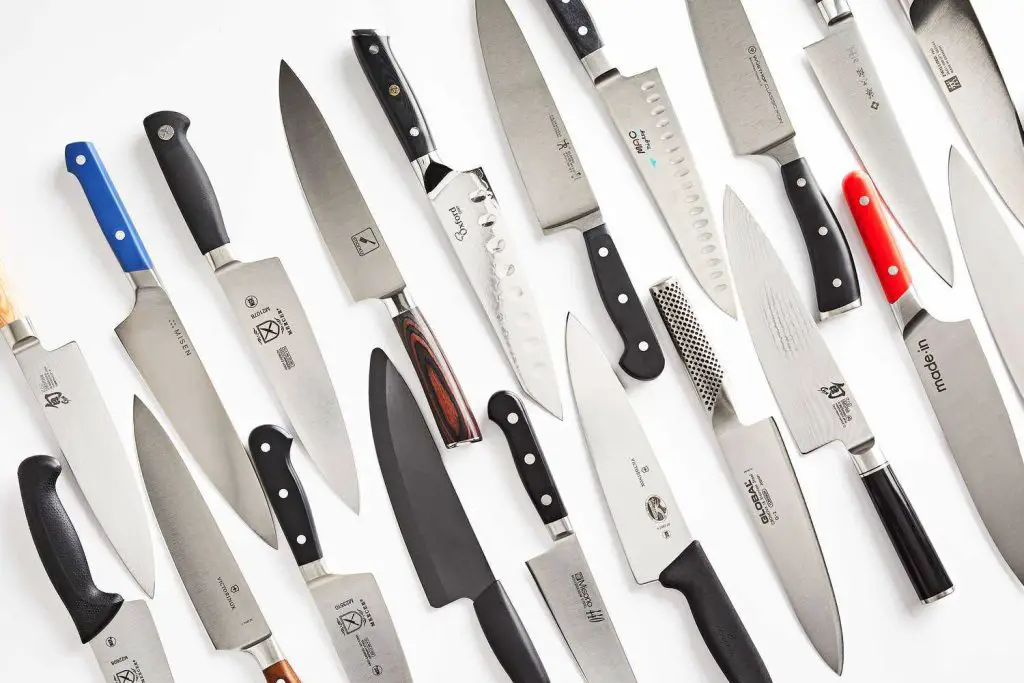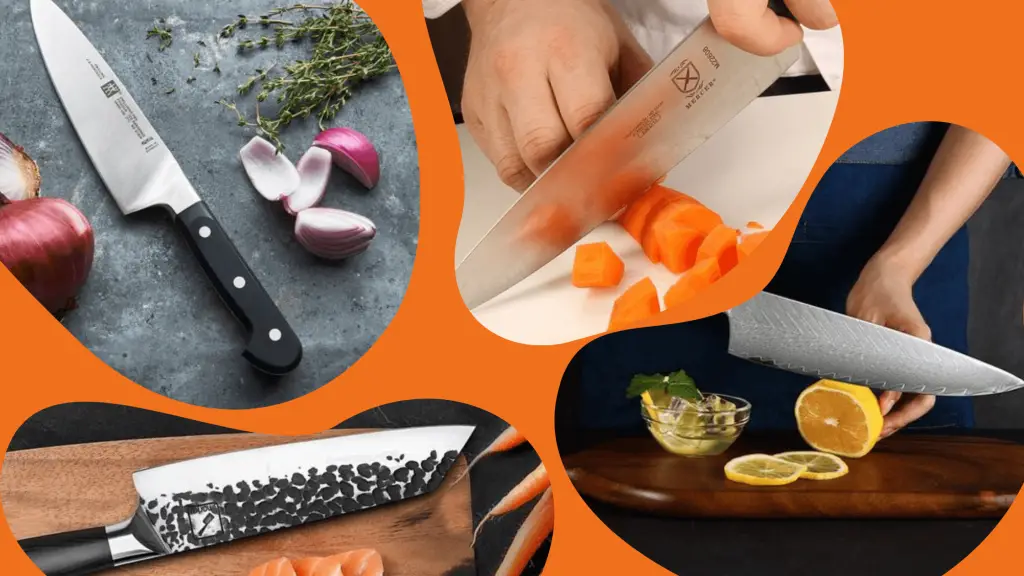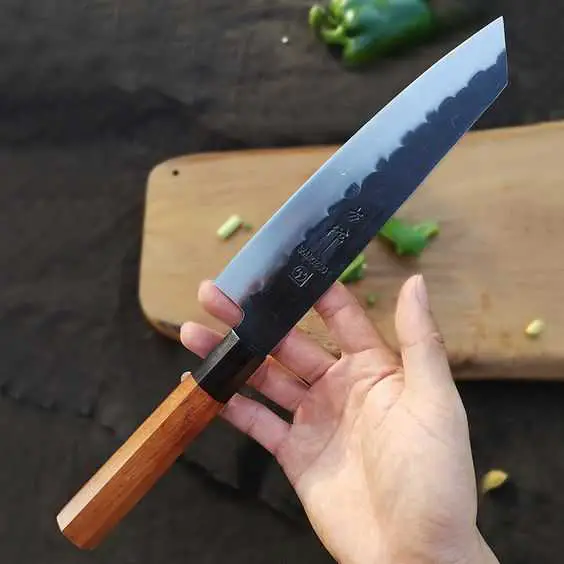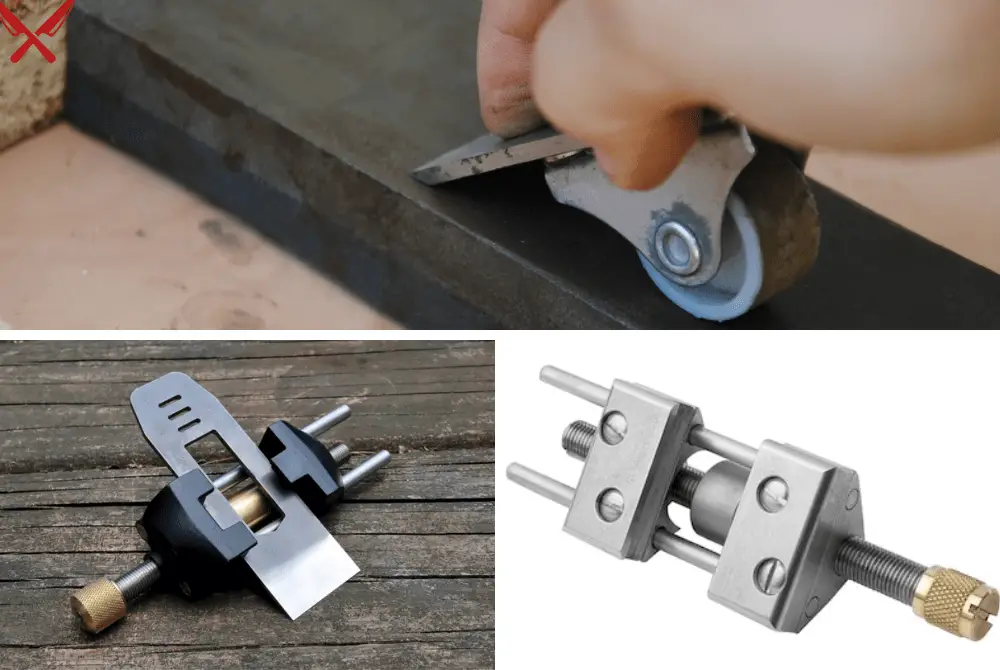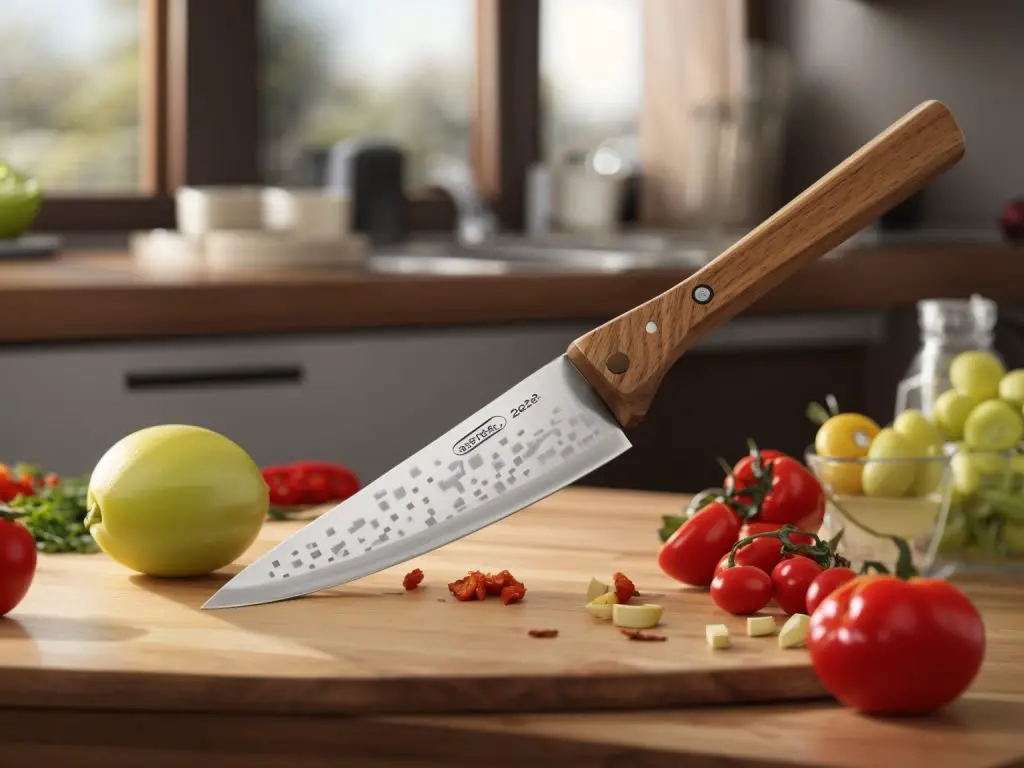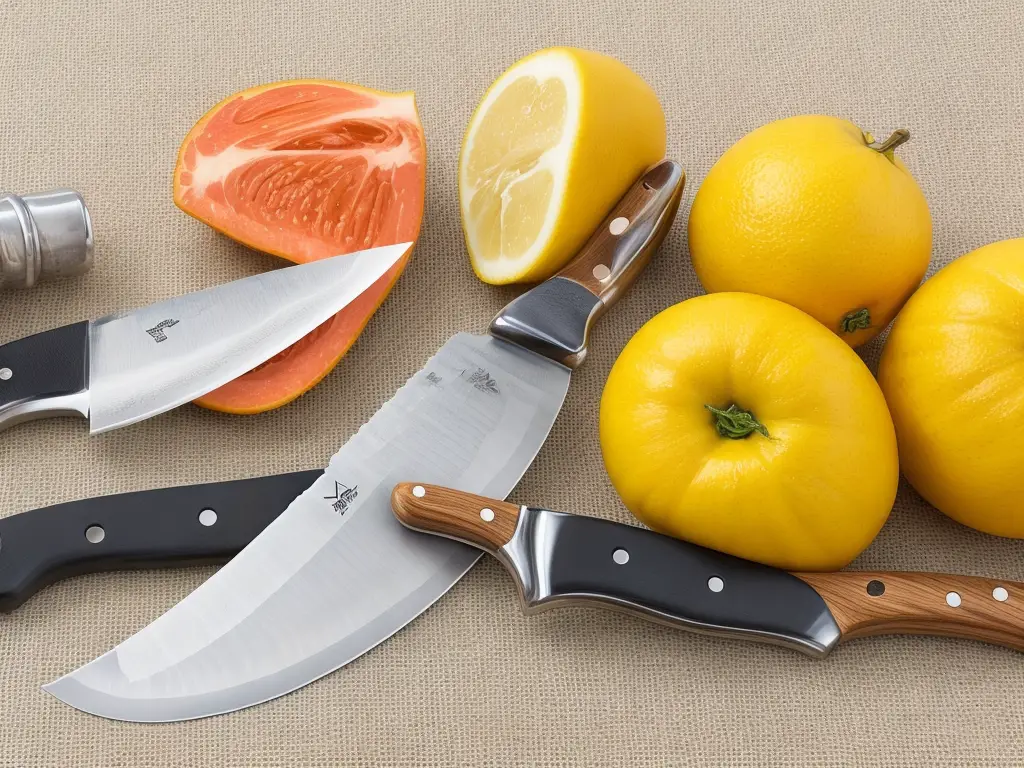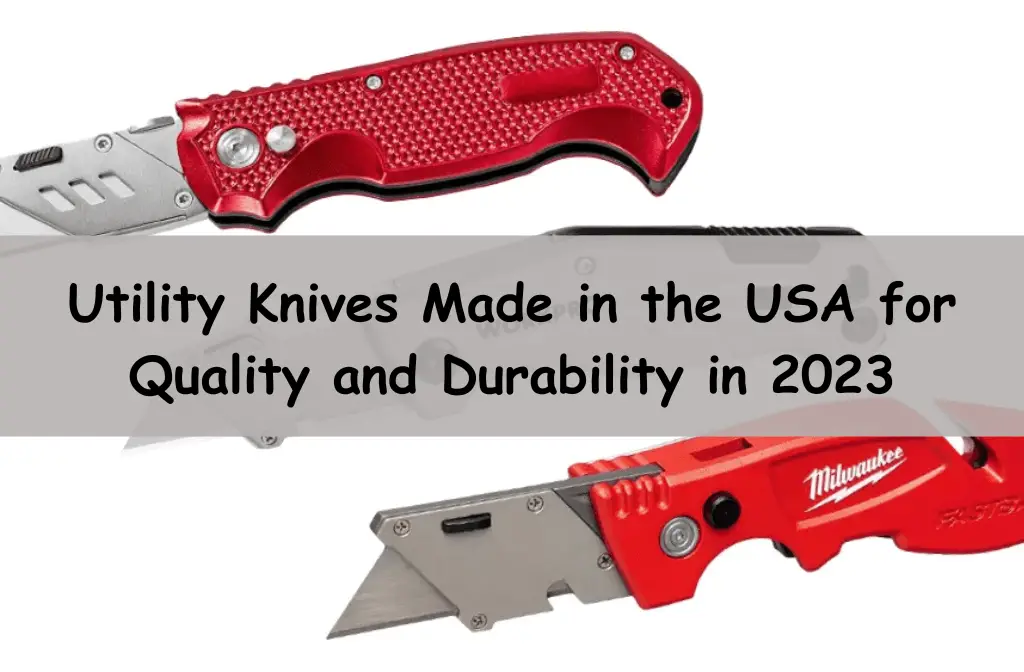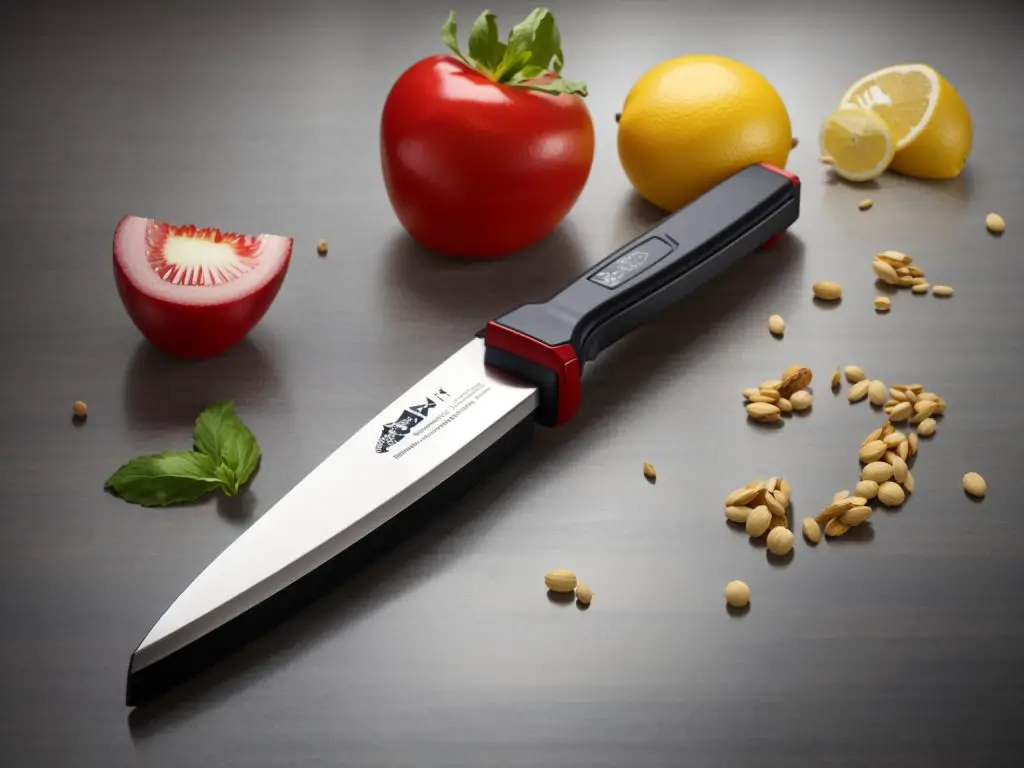
The handle Materials of a kitchen knife are a critical component that significantly affects the knife’s performance and user experience. It serves as the primary interface between the user and the blade, playing a vital role in ensuring control, precision, and comfort during cutting tasks. The choice of handle material can greatly impact the knife’s overall functionality, safety, and durability.
An ergonomic and well-designed handle not only enhances the grip but also reduces the risk of accidents and hand fatigue. Different handle materials offer unique characteristics and features that cater to various culinary preferences and cooking styles. Therefore, understanding the properties of each handle material is essential for selecting the right knife for specific tasks and personal preferences.
Overview of the Main Handle Materials Commonly Used
Wood Handle Materials:
Wood Materials have been a traditional choice for knife handles due to their natural beauty, warm feel, and unique grain patterns. Common types of wood knives used include walnut, cherry, ebony, and rosewood. Wood handles often provide a comfortable and familiar grip that many chefs and home cooks appreciate. However, their porosity requires careful maintenance to prevent moisture absorption and potential damage.
Plastic Handles:
Plastic handles, often made from materials like polypropylene or nylon, are widely used in commercial kitchen knives. They offer excellent durability, water resistance, and ease of maintenance. Plastic handles are often textured or contoured to enhance grip and prevent slippage during use. While they may lack the elegance of wood or other materials, their practicality makes them popular in professional settings.
Metal Handles:
Metal handles, typically crafted from stainless steel, aluminum, or titanium, provide a modern and sleek appearance. They are favored for their sturdiness and hygienic properties, making them suitable for heavy-duty applications. However, metal handles can be less comfortable for extended use, as they may transmit more vibrations and coldness to the hand.
Composite Handles:
Composite handles combine multiple materials, such as wood and resin, to offer a balance of aesthetics and performance. These handles often provide the best of both worlds, featuring the natural beauty of wood with added durability and moisture resistance from the resin. Composite handles are designed to offer improved grip and longevity, making them an attractive option for many users.
In the following sections, we will delve deeper into each handle material, exploring their specific characteristics, and impact on grip, comfort, and durability. By understanding these factors, you can make informed decisions when selecting the ideal kitchen knife handle material for your needs and preferences.
Note: This article is a comprehensive examination of the different handles materials used in kitchen knives, discussing their impact on grip, comfort, and durability. Each section delves into the specific characteristics, pros, and cons of the materials, helping readers make informed decisions when choosing a knife with the most suitable handle material for their needs.
Wood Handles
Characteristics of wood handles
Wood handles are known for their natural beauty and warm aesthetics, often displaying unique grain patterns that add a touch of elegance to kitchen knives. They offer a traditional and classic feel, appealing to those who appreciate the charm of natural materials. Wood handles also tend to be comfortable to hold due to their organic texture, providing a familiar grip that many chefs and home cooks prefer.
Grip and comfort factors
The texture of wood handles contributes to their grip and comfort. The natural grain pattern can offer a non-slip surface, allowing users to maintain better control during cutting tasks. Additionally, the warmth of the wood feels pleasant in hand, reducing discomfort during extended use. Many people find the ergonomic shape and organic feel of wood handles conducive to precise and effortless knife handling.
Durability and maintenance considerations
While wood handles offer beauty and comfort, they require more attention when it comes to maintenance. Wood is a porous material, making it susceptible to absorbing moisture. Excessive exposure to water can cause swelling, warping, and even cracking of the handle. To maintain the longevity of wood handles, users must diligently dry the handle after cleaning and periodically apply food-safe mineral oil or other wood preservatives to protect against moisture damage.
Popular wood choices for knife handles
Several wood types are commonly used for knife handles, each with its own unique appearance and characteristics. Walnut is a popular choice known for its rich, dark color and durability. Cherry wood offers a warm reddish hue and smooth texture. Ebony is a luxurious option with deep black coloration, providing an elegant contrast to the knife’s blade. Rosewood is also favored for its dark and intricate grain patterns, adding a touch of sophistication to the knife’s overall design. Other popular wood choices include maple, oak, and birch, each offering its distinct appeal to knife enthusiasts.
Plastic Handles
Characteristics of plastic handles
Plastic handles are known for their practicality and versatility. They are typically made from materials like polypropylene or nylon, which offer excellent durability and resistance to water and chemical damage. Plastic handles are often molded into various shapes and textures, providing a comfortable and secure grip for users. They come in a wide range of colors, allowing for customization and easy identification of different knives in a kitchen setting.
Grip and comfort factors
The design of plastic handles often incorporates textured or contoured patterns, enhancing grip and reducing the risk of slippage during use. The ergonomic shapes and non-slip surfaces make plastic handles suitable for prolonged cutting tasks, minimizing hand fatigue. Additionally, the lightweight nature of plastic handles makes them easy to maneuver and control, particularly for precision cutting.
Durability and maintenance considerations
Plastic handles are highly durable and resistant to impacts, making them suitable for heavy-duty kitchen tasks. They do not absorb moisture like wood, which eliminates the risk of swelling or cracking. Cleaning and maintenance are straightforward, as plastic handles can withstand regular washing with soap and water without any special treatment.
Advantages and disadvantages of plastic handles
- Durability: Plastic handles are robust and can withstand rough handling and impacts, ensuring a long lifespan for the knife.
- Water Resistance: The non-porous nature of plastic makes it highly resistant to moisture, preventing damage due to water exposure.
- Easy Maintenance: Plastic handles require minimal maintenance and can be easily cleaned with standard dishwashing practices.
- Cost-Effective: Plastic handles are generally more affordable than other materials, making them a budget-friendly option.
Disadvantages of Plastic Handles:
- Aesthetics: Some users may find plastic handles less visually appealing compared to natural materials like wood or high-end options like metal or composite.
- Heat Conductivity: Plastic handles may not insulate against heat as effectively as some other materials, making them less suitable for high-temperature applications.
- Environmental Concerns: Some individuals may prefer eco-friendly options, and plastic handles can contribute to environmental waste.
- Overall, plastic handles are an excellent choice for those seeking practicality, durability, and affordability in their kitchen knives. They offer reliable performance for everyday use and are a popular option, particularly in commercial kitchens and households looking for low-maintenance yet functional knife handles
Metal Handle Materials
Characteristics of Metal Handle Materials
Metal handles are known for their sleek and modern appearance, offering a contemporary aesthetic to kitchen knives. They are crafted from various metals such as stainless steel, aluminum, or titanium, each with its unique properties. Metal Handle Materials tend to be solid and provide a firm grip, giving users a sense of control and precision during cutting tasks. Their minimalist design appeals to those who prefer a clean and elegant look in their kitchen cutlery.
Grip and comfort factors
The grip and comfort of metal handles depend on their design and texture. Some metal handles feature smooth and polished surfaces, while others may have textured patterns or added contours for better grip. However, metal handles may not offer the same warmth and tactile feel as materials like wood or composite, and some users may find them less comfortable during prolonged use, as they can transmit more vibrations and coldness to the hand.
Durability and maintenance considerations
Metal Handle Materials are highly durable and can withstand heavy use without showing signs of wear. They are resistant to moisture and do not require extensive maintenance beyond regular cleaning with soap and water. However, some metal finishes, like polished stainless steel, may show fingerprints or scratches more easily, which could affect the handle’s appearance over time.
Common metals used for knife handles
Stainless Steel:
Stainless steel handles are popular for their corrosion resistance and strength. They offer a shiny and polished appearance, suitable for both modern and traditional knife designs.
Aluminum:
Aluminum handles are lightweight and known for their excellent strength-to-weight ratio. They are often anodized or coated to enhance their resistance to corrosion and scratches.
Titanium:
Titanium handles combine strength with lightweight properties, making them ideal for those seeking a durable yet lighter option. They can be finished with various surface treatments for added aesthetics and increased wear resistance.
In summary, metal handles offer a sleek and contemporary look to kitchen knives, appealing to users who prioritize modern aesthetics and robust performance. They are well-suited for heavy-duty use in professional kitchens and for individuals seeking a clean and minimalist design. However, users who prioritize a warmer and more tactile grip may prefer other handle materials such as wood or composite.
Composite Handle Materials
Characteristics of composite handles
Composite handles are a blend of different materials, typically combining wood and resin. The combination of these materials offers a balance of aesthetics and performance. Composite handles often retain the natural beauty and warmth of wood while benefiting from enhanced durability, moisture resistance, and stability provided by the resin. The use of multiple materials allows for a wide range of design possibilities, making composite handles versatile and appealing to a broad audience.
Grip and comfort factors
Composite handles are designed to provide a comfortable and secure grip. The inclusion of wood in the handle construction offers a natural texture that enhances grip and reduces slippage during use. The ergonomic shaping of composite handles contributes to a comfortable hold, minimizing hand fatigue during prolonged cutting tasks. Users can enjoy the tactile feel of wood while appreciating the added stability and tactile properties brought by the resin component.
Durability and maintenance considerations
Composite handles are highly durable, benefitting from the enhanced strength and moisture resistance provided by the resin. The combination of materials makes them less susceptible to warping or cracking, even when exposed to varying environmental conditions. Maintenance is relatively simple, requiring standard cleaning with soap and water. Periodically applying food-safe mineral oil to the wood component can help preserve its natural beauty and prevent drying over time.
Advantages and applications of composite handles
Enhanced Durability: Composite handles offer improved resilience compared to traditional wood handles, making them suitable for heavy-duty kitchen tasks and professional use.
Moisture Resistance: The resin component provides excellent moisture resistance, reducing the risk of swelling or damage due to exposure to water.
Aesthetics: Composite handles combine the natural beauty of wood with the contemporary appeal of resin, resulting in an eye-catching and unique appearance.
Versatility: Composite handles come in various designs and color combinations, allowing for a wide range of customization to match individual preferences.
Stability: The combination of materials ensures a stable and consistent handle, maintaining its shape and integrity over time.
Comfortable Grip: The ergonomic shaping and natural texture of wood in composite handles contribute to a comfortable and secure hold during cutting tasks.
Composite handles are well-suited for various kitchen knives, from everyday utility knives to high-end chef’s knives. Their balanced blend of aesthetics, durability, and comfort makes them a popular choice among users seeking a versatile and reliable option for their culinary tools.
Impact on Grip, Comfort, and Durability Handle Materials
Comparative analysis of handle materials in terms of grip and comfort
Wood Handle Materials
Grip: Wood handles offer a natural and tactile grip due to their organic texture and grain patterns. The surface can become slightly smoother with use, enhancing comfort.
Comfort: Many users find wood handles comfortable to hold, as they provide a warm and familiar feel in hand. However, their comfort may be affected if not properly maintained and become rough or swollen due to moisture absorption.
Plastic Handle Materials:
Grip: Plastic handles often incorporate textured or contoured patterns, providing a secure and non-slip grip during use. The material’s smooth surface can be comfortable for most users.
Comfort: Plastic handles are generally comfortable to hold, especially for those who prefer a lighter grip. Their lightweight nature reduces hand fatigue during prolonged use.
Metal Handle Materials:
Grip: Metal handles offer a firm and solid grip, but their smooth and sometimes slippery surface may require extra attention to maintain a secure hold during use.
Comfort: Some users may find metal handles less comfortable due to their cold and rigid nature, which can cause discomfort during extended cutting tasks.
Composite Handles:
Grip: Composite handles combine the natural texture of wood with the added stability of resin, providing an excellent grip and reducing slippage during use.
Comfort: The inclusion of wood in composite handles contributes to a comfortable and warm feel in hand, making them a preferred choice for users seeking a balance of comfort and performance.
Factors affecting durability for different handle materials
Wood Handles:
Wood handles are susceptible to moisture absorption, which can lead to swelling, warping, and cracking if not properly maintained. Regular oiling and drying are crucial to prevent damage.
Plastic Handles:
Plastic handles are highly durable and resistant to moisture, making them less prone to damage compared to wood. However, they may be more susceptible to scratches and wear over time.
Metal Handles:
Metal handles, particularly those made of stainless steel, offer excellent durability and resistance to corrosion. However, they may show signs of scratches and fingerprints, affecting their appearance.
Composite Handles:
Composite handles benefit from the enhanced durability of resin, reducing the risk of moisture-related damage. Proper maintenance, such as oiling the wood component, helps preserve their longevity.
Ergonomic considerations for different grip styles
Different users may have varying grip styles when holding kitchen knives, and handle design plays a crucial role in accommodating these preferences. For pinch grips, where the thumb and index finger hold the blade’s base, ergonomic handle shapes with suitable finger grooves or contours provide a secure hold and better control.
Handles with full tang construction (the blade extends through the entire handle) enhance balance and stability for users who prefer a full grip. Additionally, handles with bolster or finger guard designs offer extra safety during various grip styles, ensuring fingers are protected from accidental slippage towards the blade. A well-designed handle that matches the user’s grip style can significantly improve comfort and overall knife performance
Handle Material Selection Considerations
Different culinary preferences and cooking techniques may influence the choice of handle material. For users who prioritize tradition and natural aesthetics, wood handles may be preferred due to their warm and classic appeal. Chefs who seek practicality and easy maintenance might opt for plastic or metal handles, which offer durability and resistance to moisture. Those looking for a balance of aesthetics and performance may find composite handles appealing, as they combine the beauty of wood with the advantages of resin.
User Preferences and hand size
User Preferences and hand size play a significant role in handling material selection. Some individuals may have a preference for a particular handle material based on its texture, weight, or tactile feel. Additionally, users with larger hands may find larger and more substantial handles, such as those found on some metal knives, more comfortable and easier to control. Conversely, individuals with smaller hands may prefer handles with more ergonomic shaping and contours for a secure grip.
Maintenance and cleaning requirements
The maintenance and cleaning requirements of handle materials are essential considerations. Wood handles, while visually appealing, require more care to prevent damage from moisture absorption. Plastic handles offer easy maintenance and can withstand regular cleaning with soap and water. Metal handles are generally low maintenance, but certain finishes may require extra attention to preserve their appearance. Composite handles provide a balance of durability and ease of maintenance with periodic wood oiling to maintain their natural beauty.
Aesthetics and craftsmanship
The aesthetics of the handle material and the overall craftsmanship of the knife can be significant factors in the selection process. Some users may value the natural beauty of wood and the unique grain patterns it offers. Others may prefer the sleek and modern appearance of metal handles. Additionally, the level of craftsmanship in the handle design, such as intricate detailing or seamless integration with the blade, can influence the overall appeal and perceived quality of the knife.
In conclusion, selecting the right handle material for a kitchen knife involves considering various factors, including culinary preferences, cooking techniques, user preferences and hand size, maintenance requirements, and desired aesthetics. By understanding the unique characteristics and advantages of each handle material, users can make informed decisions and find a knife that not only performs well but also aligns with their personal preferences and style in the kitchen.
Conclusion
In conclusion, the choice of handle material significantly impacts the grip, comfort, and durability of kitchen knives. Wood handles offer a warm and classic feel but require careful maintenance. Plastic handles provide practicality and easy maintenance, while metal handles offer a modern look but may be less comfortable. Composite handles strike a balance between aesthetics and performance.
To select the right handle material, consider culinary preferences, hand size, maintenance requirements, and desired aesthetics. Future trends may see advancements in eco-friendly and sustainable materials, as well as innovations in lightweight yet durable options. Ultimately, understanding the unique features of each handle material allows users to find the perfect kitchen knife that aligns with their cooking style and personal preferences.


